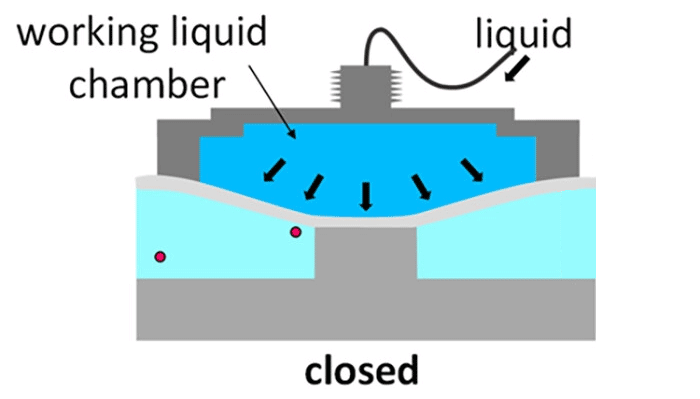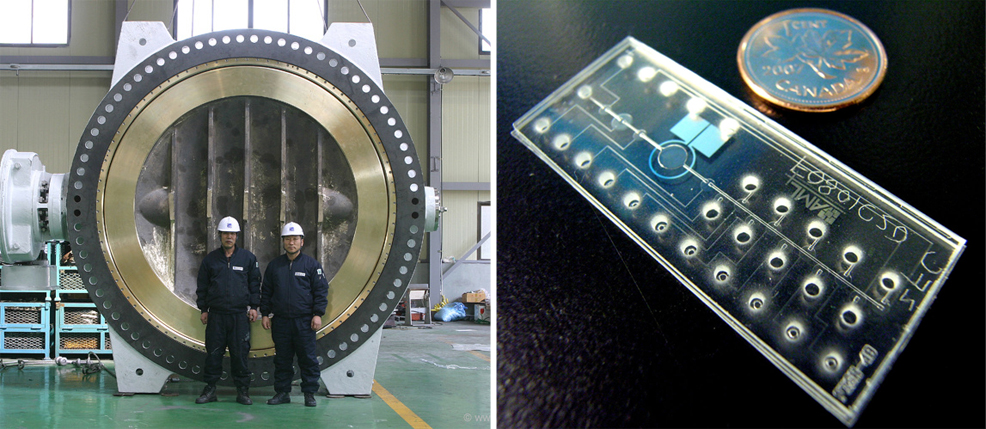
15th May 2023 Nanotechnology breakthrough: A single-molecule valve A breakthrough in nanoscale control of fluids has been demonstrated by Osaka Metropolitan University, Japan.
Nanotechnology breakthrough: A single-molecule valve. Credit: Osaka Metropolitan University
When you think of valves, you probably imagine mechanical devices used to regulate the flow of fluids or gases in pipes and other systems. Valves are essential components in many industries, including oil and gas, water and wastewater treatment, power generation, and manufacturing, among others. They come in diverse types, shapes, and sizes, each with its unique features and applications. Valves play a crucial role in controlling pressure, flow rate, temperature, and other parameters to ensure the safe and efficient operation of systems. Butterfly valves are the largest of all valve types, commonly used for gas and steam control. They can have diameters of up to 5 m (200 in) and can weigh several hundred tons, often handling abrasive or corrosive fluids with flow rates as high as tens of thousands of gallons per minute. The failure of valves to prevent flooding into compartments played a significant role in the sinking of RMS Titanic in 1912. At the opposite end of the scale, scientific instruments can include tiny valve-like devices for the precise control of fluids in lab experiments. The invention of microscopic valves can be traced back to the early 1960s, when the first microfluidic devices became available, enabling more detailed chemical analysis and biomedical applications.
During the 1980s and 1990s, advances in microfabrication technologies, such as photolithography, soft lithography, and micro-electro-mechanical systems (MEMS), allowed the development of more sophisticated devices and valves, able to control the flow of fluids at even smaller scales. Since then, the field has continued to evolve, with numerous innovations in design and fabrication. Many companies and research institutions now routinely use these devices in laboratories, medical diagnostic facilities, and industrial settings. Valves shrunk down to nanoscale dimensions are now possible, a nanometre (nm) being three orders of magnitude below a micrometre (μm). The smallest one yet seen has been demonstrated at Osaka Metropolitan University (OMU), Japan – a single-molecule device. The team behind this nanotechnology breakthrough describe their work in the journal Nano Letters. Molecules are incredibly small – around one hundred millionth the size of a tennis ball – and move randomly in liquids, making them very difficult to manipulate in a single form. To overcome this challenge, "nanofluidic devices" that can transport molecules in extremely narrow channels have attracted interest as a way to directly manipulate single molecules in solutions. The researchers at OMU developed a system that opens and closes a nanovalve in a nanofluidic device by applying external pressure. They fabricated a thin, flexible glass sheet on the top, and a hard glass plate with small structures forming nanochannels and nanovalve seats on the bottom. By applying external pressure to the flexible glass sheet to open and close the valve, they succeeded in regulating the flow of individual molecules in solution.
Nanotechnology valve for single molecules. Credit: Hiroto Kawagishi, et al. (Nano Letters, 2023)
The team also discovered that when they trapped single fluorescent (dyed) molecules in the nanospace inside the valve, the fluorescence of the single molecules became brighter. This happened because the small space made it harder for single molecules to move around randomly. Professor Yan Xu, who led the study, explains that "this effect of fluorescence signal amplification could help with detecting very small amounts of pathogens for early diagnosis of diseases such as cancers and Parkinson's, without requiring expensive equipment." This breakthrough has the potential to be useful in many other ways – "its applications are limitless," according to Xu's team. It could help in developing personalised medicines for rare diseases, or creating better displays and batteries, for example. It could be a significant step towards freely assembling materials using single molecules as building blocks in solution. "We have been addressing various challenges by proposing and promoting the concept of 'Single-Molecule Regulated Chemistry (SMRC),' where molecules are treated as building blocks and all processes involved in chemical and biochemical reactions in solution are performed on a single-molecule basis. "The single-molecule valve marks the first step towards this goal, which could one day revolutionise chemistry, biology, and materials science, as well as transform various industries," concludes Professor Xu.
Comments »
If you enjoyed this article, please consider sharing it:
|









